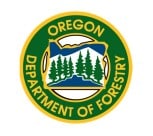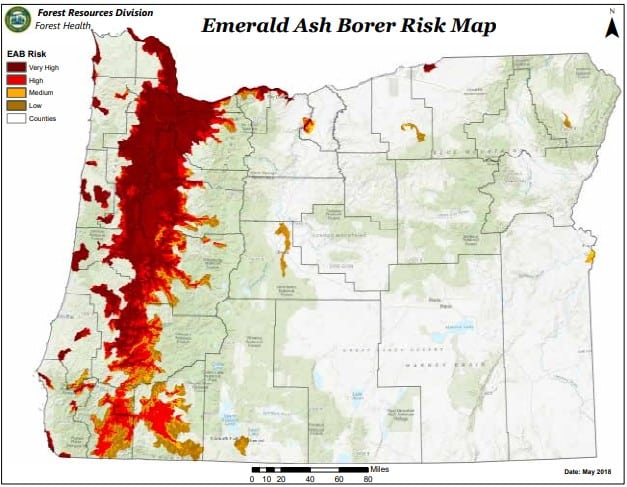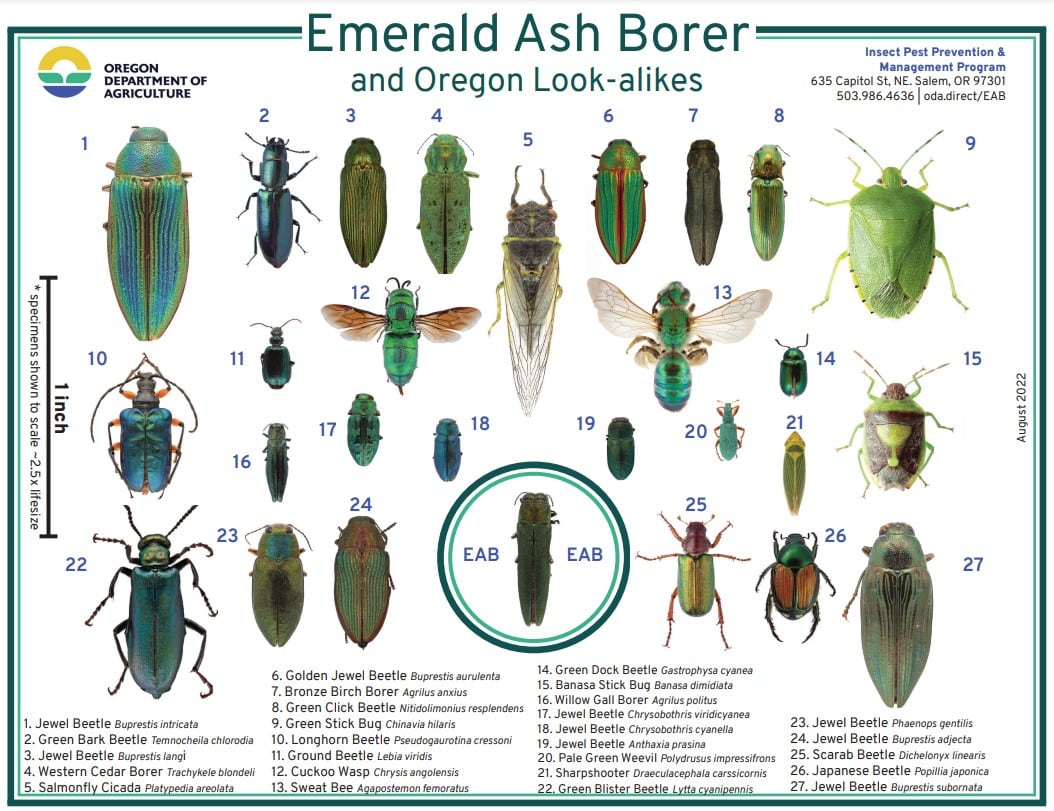invasive pest of concern
emerald ash borer
Emerald ash borer (Agrilus planipennis Fairmaire), referred to as EAB a highly destructive invasive forest pest that has killed over 100 million ash trees in the eastern U.S since its first detection near Detroit, Michigan, in 2002.
Several North American ash species (Fraxinus spp.) are at risk, including the native Oregon ash (Fraxinus latifolia) and non‐native ash species widely planted as landscape trees.
EAB was detected in Oregon on June 30, 2022, in Forest Grove.
The Emerald Ash Borer (EAB) is a very small but very destructive beetle. Metallic green in color, its slender body measures 1/2-inch long and 1/8-inch wide. The average adult beetle can fit easily on a penny. There are several lookalikes, so it is critical to accurately identify before taking steps to eradicate.
Background
Ash trees are one of the most valuable and abundant North American woodland trees: estimates of total number of ash trees in the United States alone range between seven and nine billion. The emerald ash borer has destroyed 40 million ash trees in Michigan alone and tens of millions throughout other states and Canada. Small trees can die as soon as one to two years after infestation, while larger infested trees can survive for three to four years. Heavy infestations of larval borers speed up the devastation of formerly healthy trees.
After its initial detection in the eastern U.S., EAB spread quickly beyond containment lines despite several aggressive eradication attempts. Only 20 years after its arrival in North America, five eastern U.S. ash species – green, white, black, blue and pumpkin ash – are already listed as “critically endangered” by the International Union for Conservation of Nature. In Oregon, efforts are underway to determine the extent and spread of EAB in and around Forest Grove as well as efforts to conserve native Oregon ash from the threat of EAB.
Detecting & Reporting
EAB is more often detected by keen eyes than by traps. In 2015, Oregon Department of Forestry, with financial aid from U.S. Forest Service and in conjunction with Oregon State University Extension, Oregon Department of Agriculture and the USDA Animal and Plant Health Inspection Service, developed a program to train over 500 of Oregon’s natural resource specialists from local and state agencies on how to detect and report EAB and other invasive pests.
Wildland Forest Pest
Oregon ash is known from research trials to be highly susceptible to EAB. Oregon ash is a key part of riparian forests and wetlands west of the Cascades. It grows along streams, rivers and wetlands below 2,000’ elevation, with 80 percent of the species occurring below 1,000’ elevation. At the lowest elevations (below 500’) it forms pockets of pure stands.
EAB is capable of killing entire stands of these ash. Oregon ash occurs on both lands zoned for forestry and for agriculture. Oregon ash is widely used for stream restoration plantings due to its ability to stabilize soil, control sediment, and moderate stream temperatures. It is assumed that widespread death of Oregon ash will lead to ecological changes in water quality, stream temperatures and riparian plant communities.
Oregon ash has limited use in Oregon as a timber species. However, a number of small specialty mills process this hardwood for woodworking.
Urban & Community Pest
Besides native Oregon ash, susceptible EAB hosts in Oregon include common landscape ash species: green, white, narrow‐leafed (especially the cultivar ‘Raywood’), and European ash. EAB is also known to feed on botanical relatives of ash, including white fringetree (Chionanthus virginicus) and cultivated olive (Olea europaea). In the eastern U.S., EAB has caused over $2 billion in damages. Most of the costs are from losses in residential property values, tree removal and replanting in urban areas. EAB moves quickly; it can cause nearly complete mortality of ash trees within about 10 years after detection.
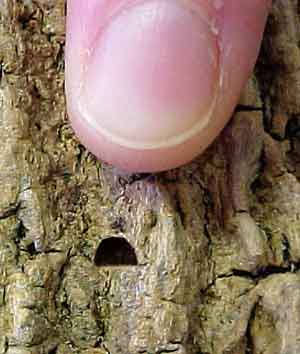
D-shaped exit holes are one indicator that a tree is infested with the EAB. These holes are 1/8" wide and can be oriented in any direction. Native borers will leave exit holes that are round or oval in shape and can vary in size.
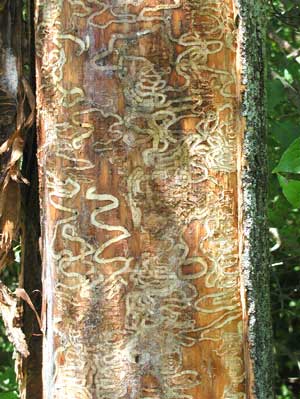
Splitting bark that reveals S-shaped tunnels are another good way to identify an EAB infestation. These "serpentine" galleries (tunnels) are made by the EAB larvae beneath the bark and are approximately 1/8" wide and are packed with frass (a fine mixture of sawdust and insect excrement.) As EAB larvae feed, trees attempt to create callus tissue around larval galleries, which can cause the bark to split vertically and reveal these tunnels



